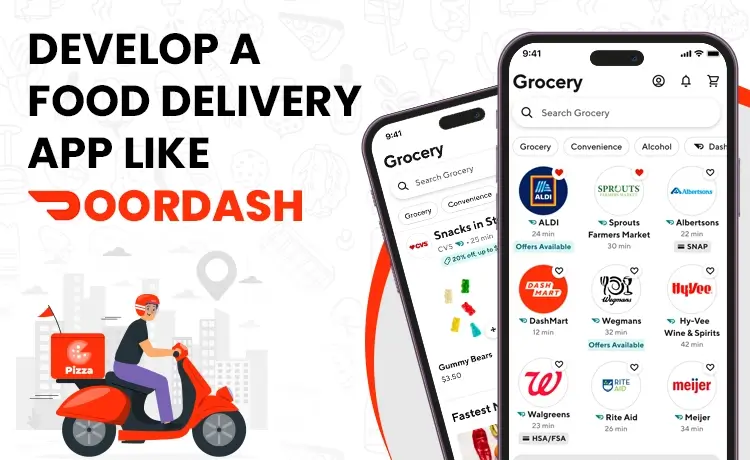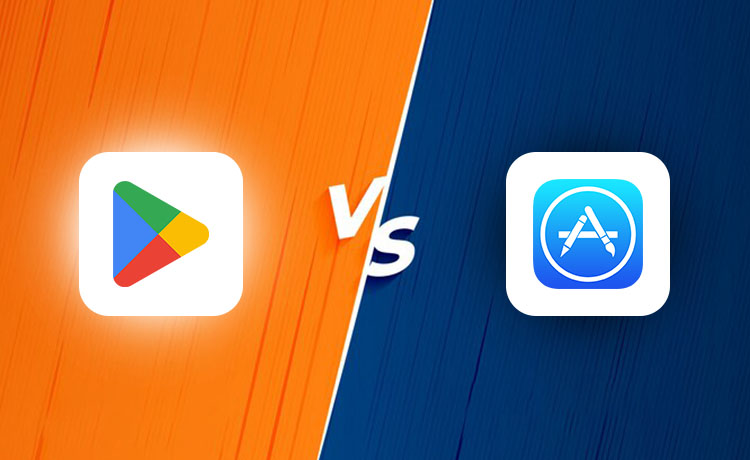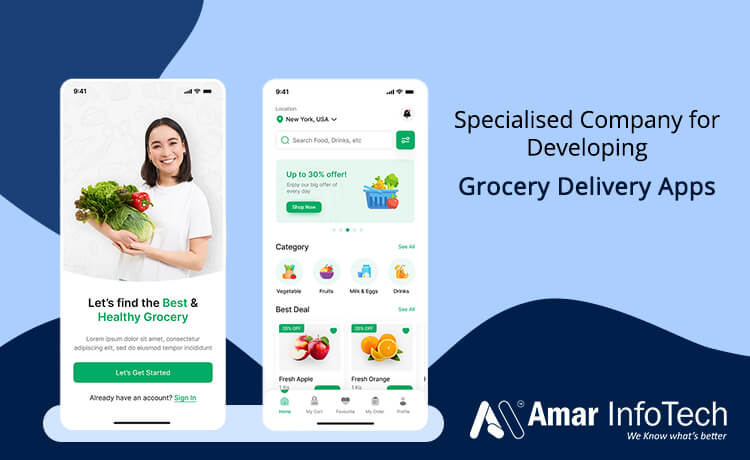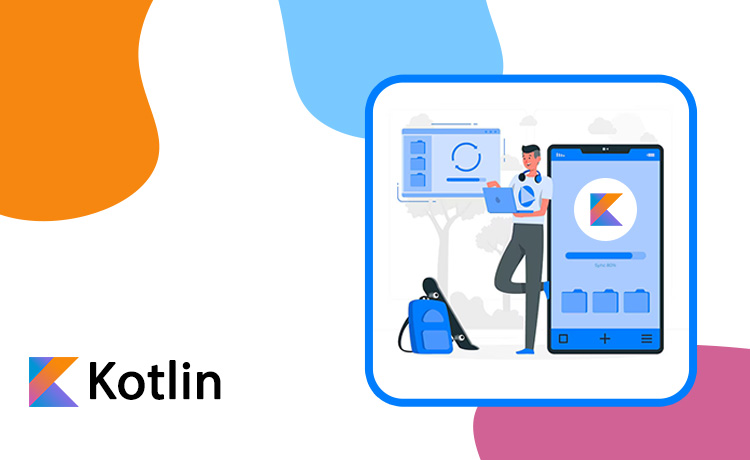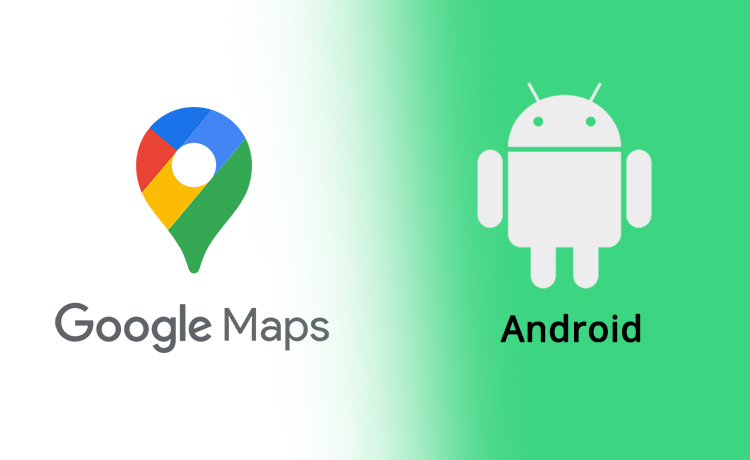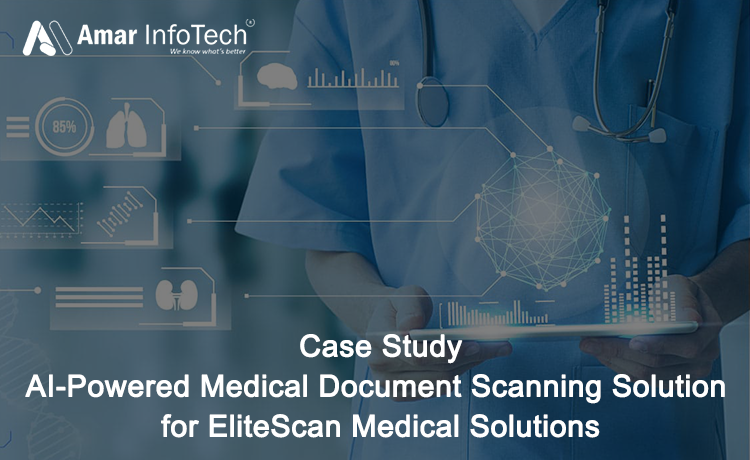Food delivery is booming. With busy lifestyles and a growing desire for convenience, services like DoorDash have changed the way we eat. If you see an opportunity in this ever-growing market, creating your own food delivery app can be a Profitable business.
But where do you start? Creating an app like DoorDash requires careful planning and execution. This comprehensive guide will give you the knowledge you need to take you through the process, from concept to getting started.
Why Develop a Food Delivery App?
Here’s a look at why entering the food delivery app market can be a recipe for success and a highly profitable business opportunity. With the demand for convenient, on-demand food delivery continuing to grow, this sector offers a lucrative avenue for entrepreneurs.
Food delivery apps not only attract a broad customer base but also allow for AI-powered product recommendations and AI-driven demand forecasting to boost customer retention and optimize inventory management. By tapping into this thriving market, businesses can enjoy high revenue potential and an opportunity to leverage cutting-edge technology to stand out from competitors.
- Thriving Market
- High Demand
- Scalability
- Multiple Revenue Streams
The global online food delivery market is projected to reach a staggering $1.79 trillion by 2028 (source: Expert Market Research).
Consumers crave convenience. Food delivery apps cater to this need by offering a vast selection of restaurants and hassle-free ordering.
Your app can grow alongside your user base. Start local and expand geographically as your brand gains traction.
Explore options like delivery fees, subscriptions, and in-app advertising to monetize your platform.
Understanding Your Competition
While the food delivery space is vast, established players like DoorDash and Uber Eats dominate the market. However, there's always room for innovation. Here's how to analyze your competitors effectively:
- Features
- Target Audience
- Pricing Strategy
Identify core functionalities offered by competitors like DoorDash . Analyze their strengths and weaknesses to identify potential gaps you can fill.
Understand who your competitors cater to. Are they targeting a specific demographic or dietary preference? Can you offer a more niche experience?
Research your competitors' pricing models for delivery fees and commissions charged to restaurants. Can you offer a more competitive or unique pricing structure?
Building Your Food Delivery App: A Step-by-Step Guide
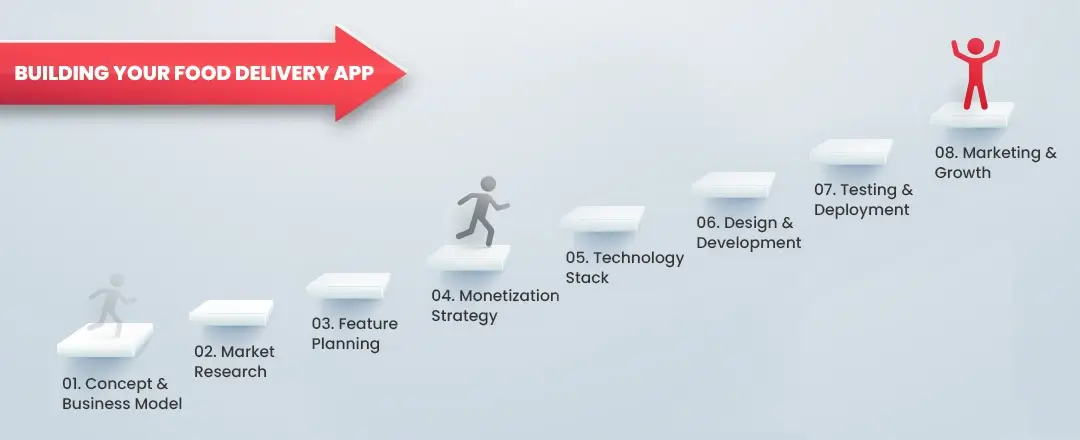
Creating a successful food delivery app requires careful planning and execution. Here’s a step-by-step guide to help you navigate the process:
- Concept & Business Model
- Market Research
- Feature Planning
- Monetization Strategy
- Technology Stack
- Design & Development
- Testing & Deployment
- Marketing & Growth
Define the unique value proposition of your app. Will it operate as a platform-to-consumer model, an order-only model, or a full-stack model with in-house delivery drivers and AI-powered order management?
Conduct thorough market research to understand user preferences, competitor offerings, and regional trends.
Prioritize essential features like browsing menus, ordering food, real-time order tracking, secure payment processing, and user reviews. Consider additional features like in-app chat, loyalty programs, and integration with popular food photography apps to stand out.
Decide on how your app will generate revenue. Popular methods include delivery fees, commissions from restaurants, in-app advertising, and subscription models.
Choose a technology stack that aligns with your budget and development goals. Popular options include native app development (Android and iOS) or a hybrid app approach (using frameworks like React Native) for cross-platform compatibility.
Partner with a reputable app development company (like OyeLabs) to create a user-friendly and visually appealing interface for all three user panels (customer, restaurant, and delivery driver).
Rigorous testing is crucial to ensure a smooth user experience. Once satisfied, deploy your app on the respective app stores (Google Play Store and Apple App Store).
Develop a comprehensive marketing strategy to reach your target audience. Utilize social media marketing, app store optimization (ASO), and influencer marketing to generate buzz.
Analyzing Top U.S. Food Delivery Apps
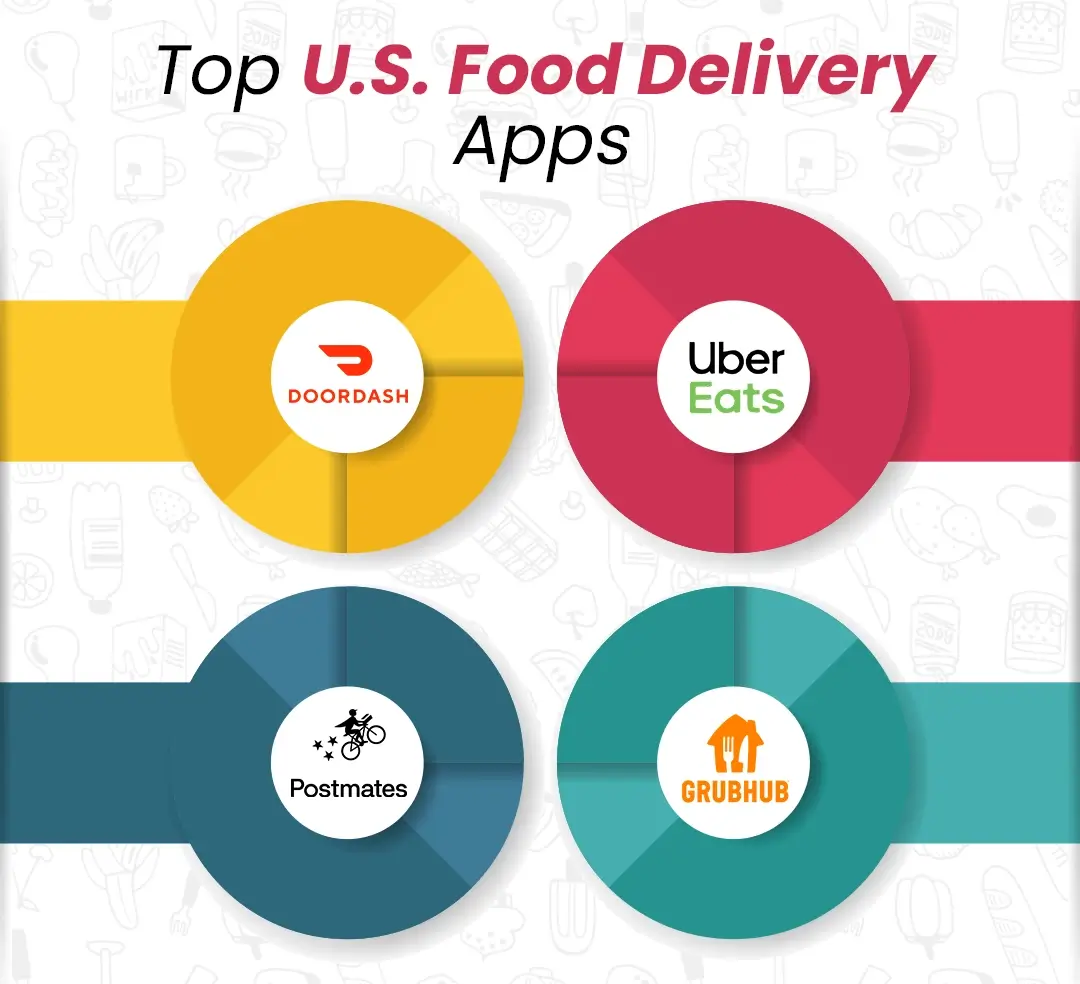
To build a successful food delivery app, it's essential to understand the competitive landscape. Leading players like DoorDash, Uber Eats, Postmates, and Grubhub cater to different segments of the U.S. market, each with unique strengths and challenges.
By analyzing these competitors, your app can identify market gaps and leverage AI-powered personalized recommendations, AI predictive analytics for demand forecasting, and inventory management to offer differentiated services and a more tailored customer experience.
- DoorDash
- Uber Eats
- Postmates
- Grubhub
With an extensive driver network and partnerships with both restaurants and grocery stores, DoorDash has positioned itself as a market leader. Its platform enables customers to order from a variety of retail categories, attracting a broad user base. However, the platform’s size and popularity mean smaller restaurants can face stiff competition for visibility, which may affect customer acquisition and retention.
Leveraging Uber’s vast driver network, Uber Eats ensures fast, reliable deliveries. Its large user base and operational efficiency are strong advantages, especially in urban areas where Uber already has a presence. However, Uber Eats’ commission fees (15-30%) can be a challenge for small to mid-sized restaurants, potentially limiting the app’s reach among independent establishments.
Now owned by Uber, Postmates has carved a niche by offering 24/7 delivery for both food and daily essentials, supported by an AI chatbot that provides 24/7 customer support. Its strength lies in catering to urban customers with flexible delivery hours and a diverse selection of items. However, limited accessibility in suburban areas restricts its potential to reach a broader audience.
Popular in cities like New York, Grubhub maintains a strong customer base with POS system integrations that streamline order management for restaurants. This feature is particularly valuable for high-volume businesses in dense urban areas. However, Grubhub’s saturated marketplace can make it challenging for smaller businesses to gain visibility, especially in competitive neighborhoods.
Key Takeaways for Your App Development
Each app’s target audience, pricing, and service provide valuable lessons:
- Targeted Marketing
- Commission Flexibility
- Flexible Service Hours
Implement hyper-localized strategies to attract regional audiences.
Offer smaller restaurants competitive commission rates to boost their visibility and appeal.
Consider extending delivery hours to cater to night-shift workers or late-night urban clients.
By identifying and addressing the limitations of these top apps, your food delivery platform can better serve specific demographics and stand out in the highly competitive U.S. market.
Cost to Develop a Food Delivery App Like DoorDash
The cost to develop a food delivery app like DoorDash can vary significantly based on a number of factors, including:
- Features and Functionality
- Platform
- Design Complexity
- Development Team
- Post-Launch Maintenance and Support
A basic app with core features like user registration, restaurant listings, order tracking, and payment integration will cost less than a complex app with advanced features like real-time order tracking, loyalty programs, and AI-powered recommendations.
Developing for both iOS and Android will typically double the development cost compared to a single platform.
A simple, minimalist design will be less expensive than a complex, visually appealing design.
The cost of hiring a development team can vary depending on their location and experience.
Ongoing costs for server maintenance, app updates, and customer support should be factored in.
A Rough Estimate
While it's difficult to provide a precise figure, a basic food delivery app with core features can cost anywhere between $10,00 to $200,000. A more complex app with advanced features can cost $200,000 or more. For a more accurate estimate, consider consulting an IT consulting firm in Phoenix, AZ.
Breaking Down the Costs
When planning for app development, it's essential to understand the various cost components involved. Here’s a comprehensive look at the primary elements that contribute to the overall budget:
App Development
- Front-End Development
- Back-End Development
- Mobile App Development
This involves creating the app’s visual elements, including buttons, menus, and layout, to ensure an intuitive user experience. Key technologies used include HTML, CSS, and JavaScript frameworks like React or Angular.
This includes the server-side logic and infrastructure that support the app, such as setting up servers, databases, and APIs for communication with external services. It is essential for data processing, user authentication, and application performance, utilizing frameworks like Laravel development and others.
Mobile app development focuses on creating applications for iOS and Android. A prominent technology in this field is Flutter, a cross-platform framework by Google that enables developers to use a single codebase for both platforms, reducing development time and costs. Flutter offers a rich set of pre-designed widgets for a native look and feel, along with hot reload for quick iterations, making it a favored choice for modern mobile app development.
Design
- UI/UX Design
This component emphasizes the importance of an attractive visual design (UI) and a seamless user experience (UX). UI/UX designers conduct research to understand user needs, develop wireframes and prototypes, and refine the app's layout and navigation. To bring design concepts to life, they often utilize tools like Adobe XD, Sketch, and Figma. By leveraging a comprehensive UI/UX consulting service, a well-designed app can significantly enhance user satisfaction and engagement.
Testing and Quality Assurance
This phase is crucial to ensure that the app is functioning correctly and is free of bugs. It involves various testing methods, including functional testing, usability testing, performance testing, and security testing. Quality assurance specialists systematically identify and resolve issues before the app is launched to the public, ensuring a smooth user experience and minimizing potential risks.
Deployment and Launch
Once the app is thoroughly tested, it needs to be deployed to app stores (such as the Apple App Store and Google Play Store). This process includes preparing the app for submission, creating necessary marketing materials (like app descriptions and screenshots), and navigating the review processes of app stores. A successful launch is pivotal for attracting initial users and building momentum.
Ongoing Maintenance and Support
After the app is live, ongoing maintenance is vital to ensure its continued success. This includes regularly updating the app to add new features, improve performance, and fix any bugs that arise. Providing customer support is also essential to address user inquiries and issues promptly. A commitment to maintenance and support helps build user trust and loyalty, ultimately contributing to the app's long-term viability.
Additional Considerations
- Third-Party Integrations
- Marketing and Promotion
- Legal and Compliance
Integrating with third-party services like payment gateways, mapping APIs, and food delivery services can incur additional costs.
Marketing and promotional activities to attract users and restaurants can significantly impact the overall budget.
Ensuring compliance with local regulations and data privacy laws can involve legal fees.
To get a more accurate cost estimate, it's recommended to consult with a mobile app development company USA like Amar InfoTech. They can assess your specific requirements and provide a detailed cost breakdown.
By carefully planning and budgeting, you can develop a successful food delivery app that meets your business objectives.
